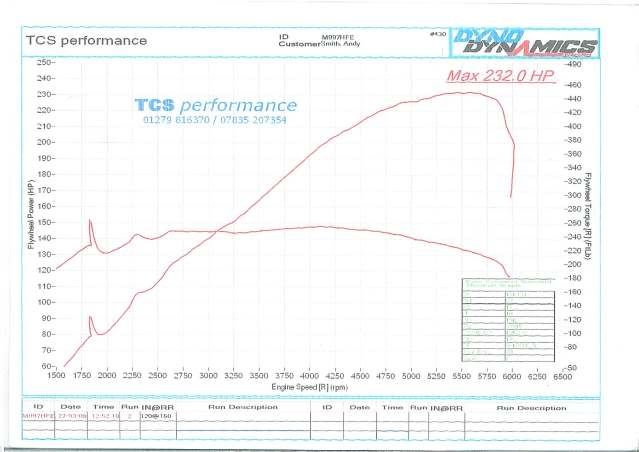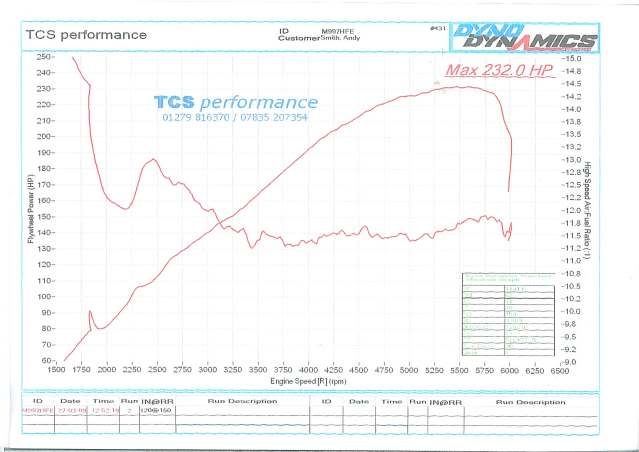Help with Edelbrock Performer manifold height for Rover v8
Moderator: phpBB2 - Administrators
Hi Mike, Er that's not quite right Mr Manta's front measurement is 123mm not 133mm.mike-b wrote: Where muscle-manta measured the carb gasket to valley he shows a different measurement between his front and rear, his front as mine is just about the same at 133mm. However mine is that same measurement ( 133 ) at the back as well and measured in the same way too. The rear in the picture shows 145mm mine is 133mm at the rear. By the way I bought my manifold brand new and it has never been altered in any way.
Anyway that aside I'm sure that you have measured your manifold accurately enough to confirm that both your measurements are the same at 133mm. I find it hard to believe that Edelbrock decided to change their machine process but I guess they must have! I must admit that every other Edelbrock RV8 manifold that I've seen is machined like mine and Muscle Manta's so I guess your one is pretty rare!
OK, thanks to everyone's help I seem to be making some progress. Using Minorv8's method I came up with a figure of 32 - 33m (a bit hard to measure like when everything is installed) compared to his approx 58mm giving a difference of 25 - 26 mm
Using the measurements Sidecar and Muscle-Manta provided, at the front I got 84mm compared to 123mm (diff of 39mm) and at the rear I got 129mm compared to 145mm (diff of 16mm). The difference in the differences could be due mine having a greater carb angle. I measured it (using an angle app on my iphone) at 5.0 deg tilting forwards compared to the top of the head. So I averaged the two sets of measurements 84+129/2=106.5 and the 123+145/2=134. The difference the averages is 27.5mm! Certainly in the same ball park Minorv8's measurement.
could be due mine having a greater carb angle. I measured it (using an angle app on my iphone) at 5.0 deg tilting forwards compared to the top of the head. So I averaged the two sets of measurements 84+129/2=106.5 and the 123+145/2=134. The difference the averages is 27.5mm! Certainly in the same ball park Minorv8's measurement.
As I said previously, from other research the height difference between the Edel Perf and the Offy 360 is .62" or 16mm. I have taken some material off the top of my manifold already and looking at it now compared to photos of manifolds it seems reasonable that I have taken off about 10mm so all the stars seem to have aligned.
Interesting point is the difference in the carb mounting angles could be very critical in applications where space is limited.
A question for Minorv8 - for interests sake. You mentioned in another thread that after testing you found the Willpower spider manifold "ruined" the low end torque compared to the Edel Performer. Is there any chance you could be more specific? Say percentage difference up to 3000rpm or something like that - was is 10% worse, 20% or 50% worse. Finally from your testing, would you consider the Willpower manifold to be suitable for the street or purely track / race. I am talking for an MGB with a 4.6 running 3.55 rear axle.
Thanks everyone for helping me clear up the actual differences between the manifolds. Cheers, Graeme
Using the measurements Sidecar and Muscle-Manta provided, at the front I got 84mm compared to 123mm (diff of 39mm) and at the rear I got 129mm compared to 145mm (diff of 16mm). The difference in the differences
As I said previously, from other research the height difference between the Edel Perf and the Offy 360 is .62" or 16mm. I have taken some material off the top of my manifold already and looking at it now compared to photos of manifolds it seems reasonable that I have taken off about 10mm so all the stars seem to have aligned.
Interesting point is the difference in the carb mounting angles could be very critical in applications where space is limited.
A question for Minorv8 - for interests sake. You mentioned in another thread that after testing you found the Willpower spider manifold "ruined" the low end torque compared to the Edel Performer. Is there any chance you could be more specific? Say percentage difference up to 3000rpm or something like that - was is 10% worse, 20% or 50% worse. Finally from your testing, would you consider the Willpower manifold to be suitable for the street or purely track / race. I am talking for an MGB with a 4.6 running 3.55 rear axle.
Thanks everyone for helping me clear up the actual differences between the manifolds. Cheers, Graeme
Graeme, I can provide the numbers once I can get to the graphs.
As for the Wilpower single plane manifold, or the spider as you described it I would say that it depends what you want and what you drive. My car is relatively light and has a 3.08 diff. With 4,6 litre engine it does pull from idle in 5th gear with gentle right foot. It has enough grunt with this manifold. My car is a road car but I do have fun on the strip every now and then. In my country there are limited number of track days and if it happens to rain there is once opportunity less.
My dream is to run 12,99 or better on the strip so until that day the Wilpower manifold will stay. Best ET so far is 13,039 so it is realistic.
I have tried to find out what is the practical limit of the Performer manifold. My best score on rolling road is around 280 hp mark.
I don't think that you would have any issues with the Wilpower manifold and it definitely leaves you scope to update the engine as well.
As for the Wilpower single plane manifold, or the spider as you described it I would say that it depends what you want and what you drive. My car is relatively light and has a 3.08 diff. With 4,6 litre engine it does pull from idle in 5th gear with gentle right foot. It has enough grunt with this manifold. My car is a road car but I do have fun on the strip every now and then. In my country there are limited number of track days and if it happens to rain there is once opportunity less.
My dream is to run 12,99 or better on the strip so until that day the Wilpower manifold will stay. Best ET so far is 13,039 so it is realistic.
I have tried to find out what is the practical limit of the Performer manifold. My best score on rolling road is around 280 hp mark.
I don't think that you would have any issues with the Wilpower manifold and it definitely leaves you scope to update the engine as well.
Ok,
here are some numbers, they are in Newtonmetres. If you prefer lb ft the just divide by 1,36 and you are close enough.
revs / torque Wilpower / torque Performer
2000 rpm 305 Nm / 345 Nm
2500 rpm 320 Nm / 390 Nm
3000 rpm 370 Nm / 400 Nm
3500 rpm 390 Nm / 415 Nm
4000 rpm 410 Nm / 420 Nm
4500 rpm 405 Nm / 405 Nm
Both runs at the same RR, as well as same engine settings.
here are some numbers, they are in Newtonmetres. If you prefer lb ft the just divide by 1,36 and you are close enough.
revs / torque Wilpower / torque Performer
2000 rpm 305 Nm / 345 Nm
2500 rpm 320 Nm / 390 Nm
3000 rpm 370 Nm / 400 Nm
3500 rpm 390 Nm / 415 Nm
4000 rpm 410 Nm / 420 Nm
4500 rpm 405 Nm / 405 Nm
Both runs at the same RR, as well as same engine settings.
Thanks heaps Minorv8 for the detail that's awesome. The Wilpower seems to perform very well against the Edel. It looks like the Wilpower has a significant "dip" at 2500rpm was this just a tuning thing?
I assume that above 4500rpm the torque on the Edelbrock starts to fall of where the Wilpower stays pretty flat? What about other things like idle quality, cold starting / running etc compared to the Edelbrock.
I have calculated the flywheel torque of my engine from the rolling road and assuming 18% driveline loss to be 400Nm between approx 3200-3500rpm and stays healthy to 3800rpm but from there the torque really drops off.
You mentioned the best you got from the Edel was approx 280HP, how does that compare to the Wilpower (maybe 300HP to 310HP?).
Thank you very much again for sharing your info and experience, Graeme
I assume that above 4500rpm the torque on the Edelbrock starts to fall of where the Wilpower stays pretty flat? What about other things like idle quality, cold starting / running etc compared to the Edelbrock.
I have calculated the flywheel torque of my engine from the rolling road and assuming 18% driveline loss to be 400Nm between approx 3200-3500rpm and stays healthy to 3800rpm but from there the torque really drops off.
You mentioned the best you got from the Edel was approx 280HP, how does that compare to the Wilpower (maybe 300HP to 310HP?).
Thank you very much again for sharing your info and experience, Graeme
It is possible because I just changed the manifold, everything else remained the same: carb jetting, ignition curve etc. I had an 1 inch thick phenolic spacer with the Performer manifold and fitted it to Wilpower as well.It looks like the Wilpower has a significant "dip" at 2500rpm was this just a tuning thing?
This is a school book example of how the single plane and dual plane manifolds behave.
Idle is nice, it is steady at 800 rpm. The engine could use more cam timing. I don´t have a choke so I just stab the gas pedal a couple of times and then start the engine. In summer it starts in 1-2 seconds. When cold it idles at about 500-600 rpm but stays running. I don´t
think that there is any difference in the manifold re. the starting.
It would be nice to have a dual plane manifold that was designed for biiger capacity engine. Also maybe a bit taller than Performer but that is just wishful thinking. The market is so limited that economically producing a new manifold would be a disaster.
Thanks, Do you drive the car with both manifolds on the road or just on the dyno? If on the road was there a real on-the-road performance difference between them below 4500rpm? Obviously there is a difference on the dyno but did these numbers have a big impact on the road - seat of pants kind of feel - or you couldn't practically tell much difference? kind regards, Graeme
I have driven years with both manifolds, Wilpower is currently fitted and will remain there until I run the 12 sec quarter mile.
Yes, you can really feel the difference in low revs. My friend who has driven my car quite a lot (maybe harder than me ) commented when I changed the manifold that it feels very lazy compared to the old manifold.
) commented when I changed the manifold that it feels very lazy compared to the old manifold.
Yes, you can really feel the difference in low revs. My friend who has driven my car quite a lot (maybe harder than me
-
Johnny Canuck
- Newbie

- Posts: 1
- Joined: Mon Nov 25, 2013 11:47 pm
- Location: Canada






